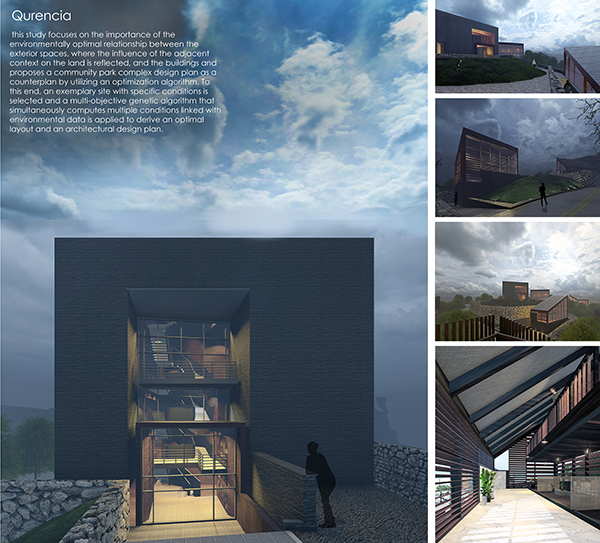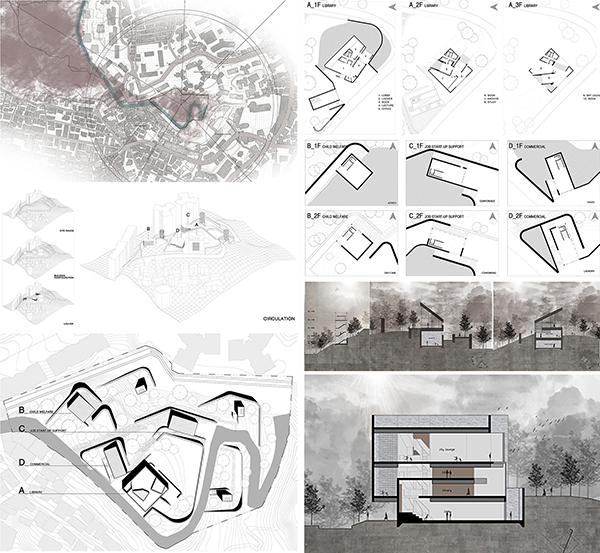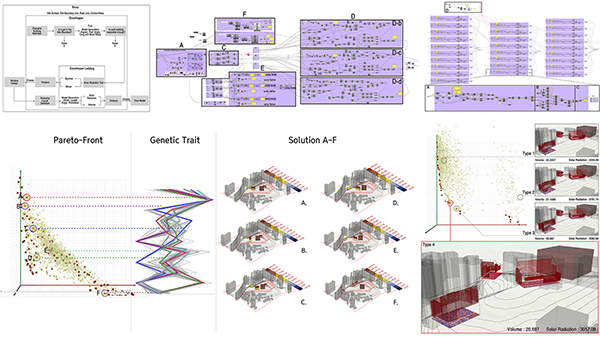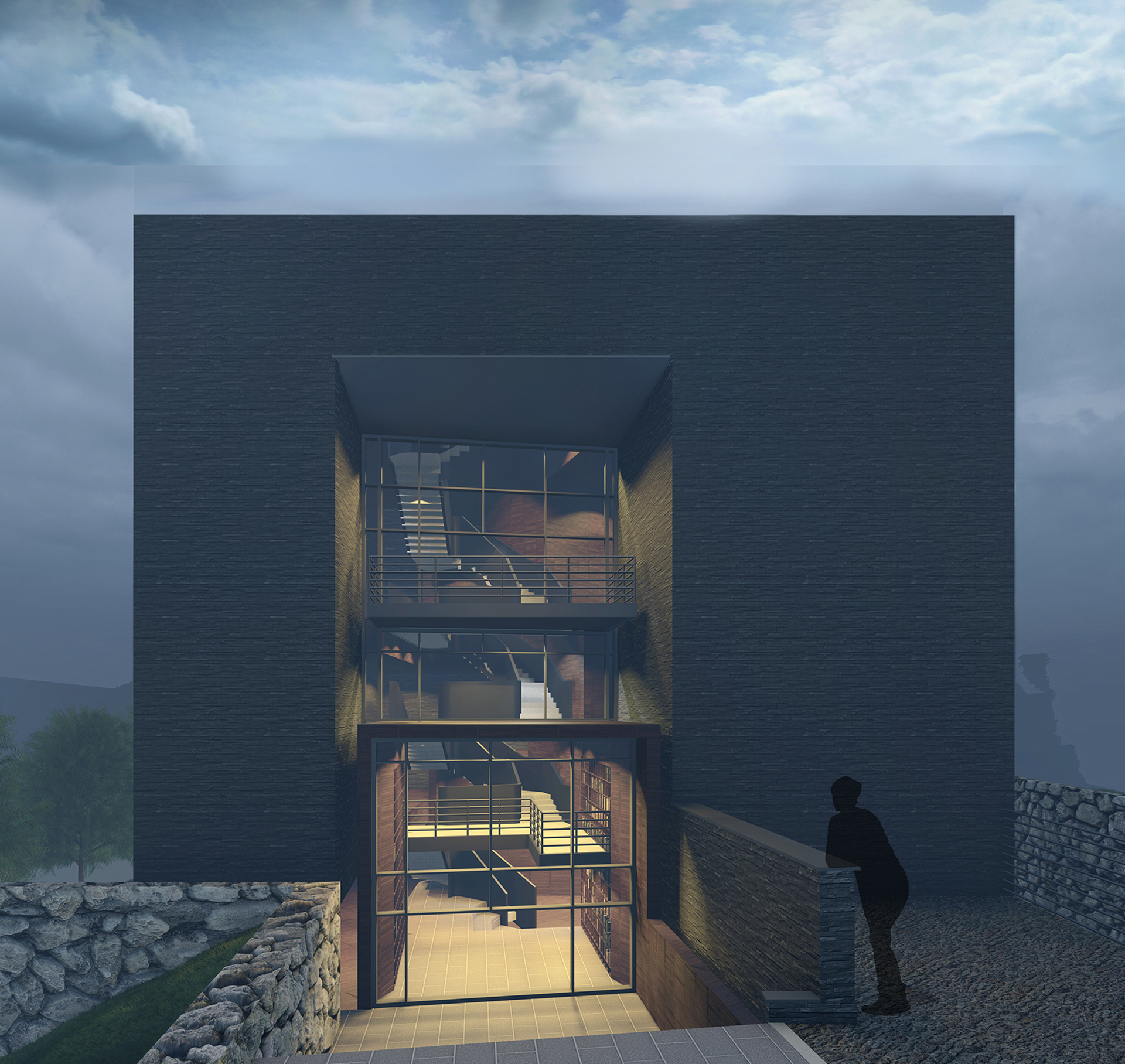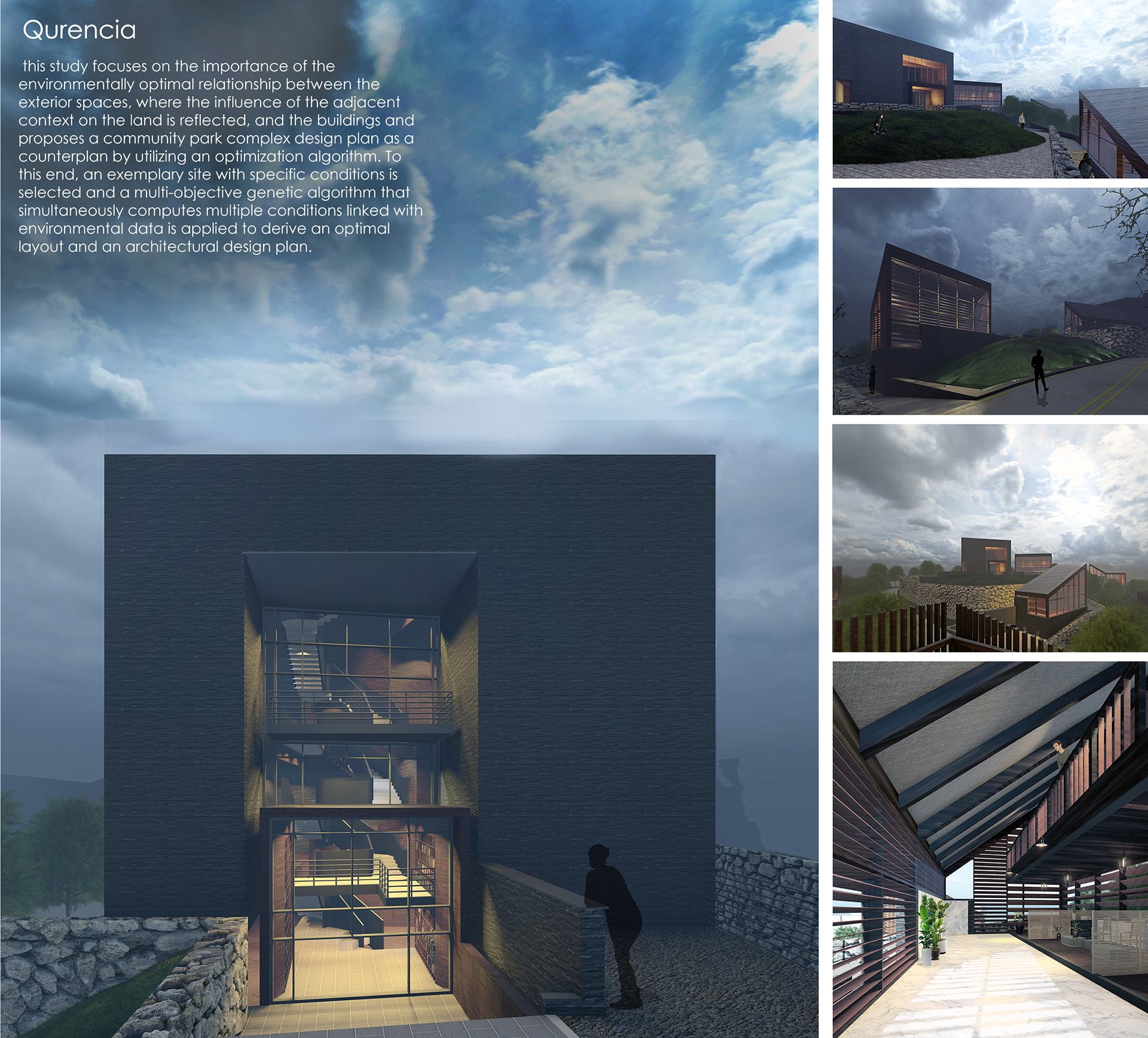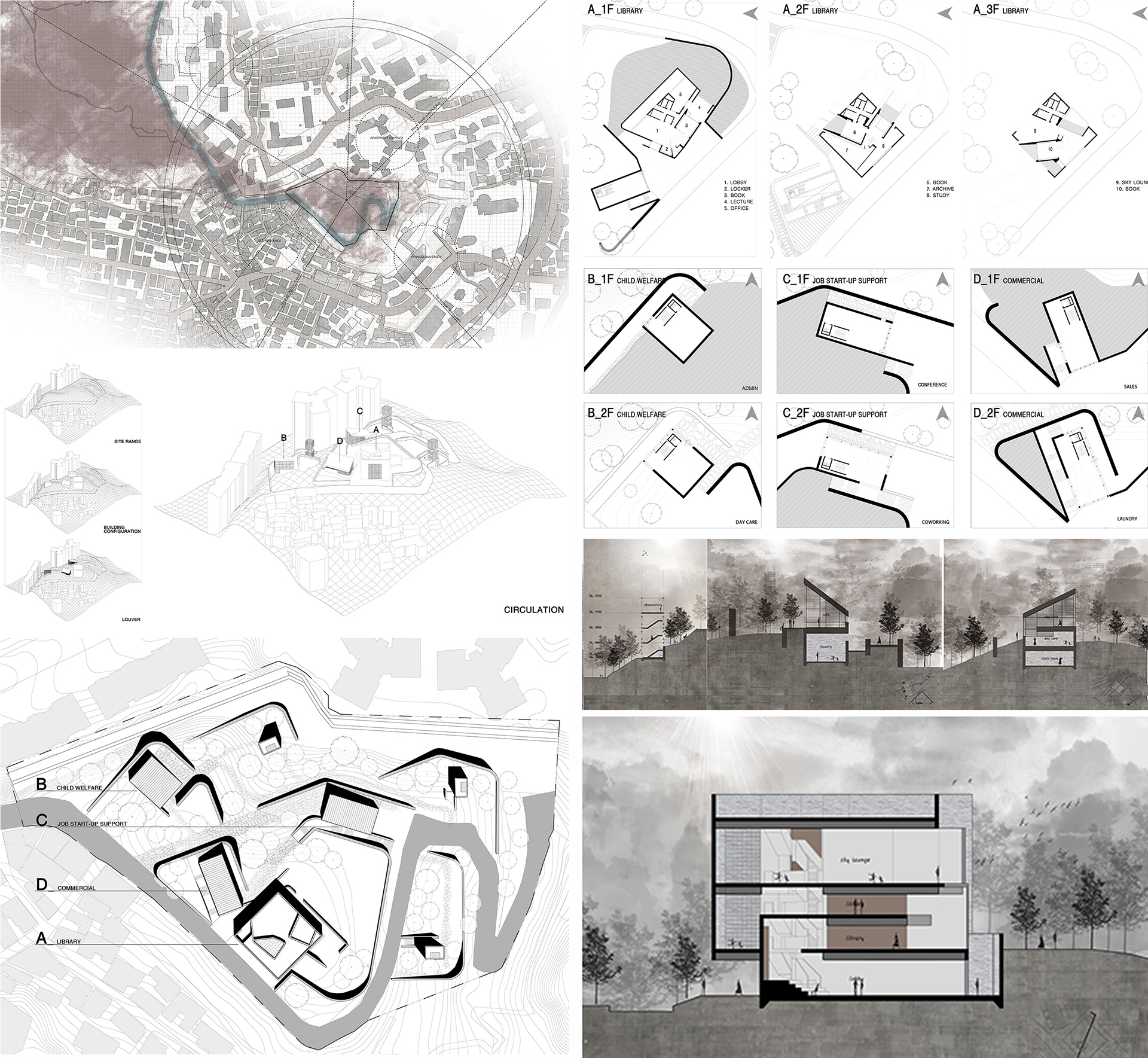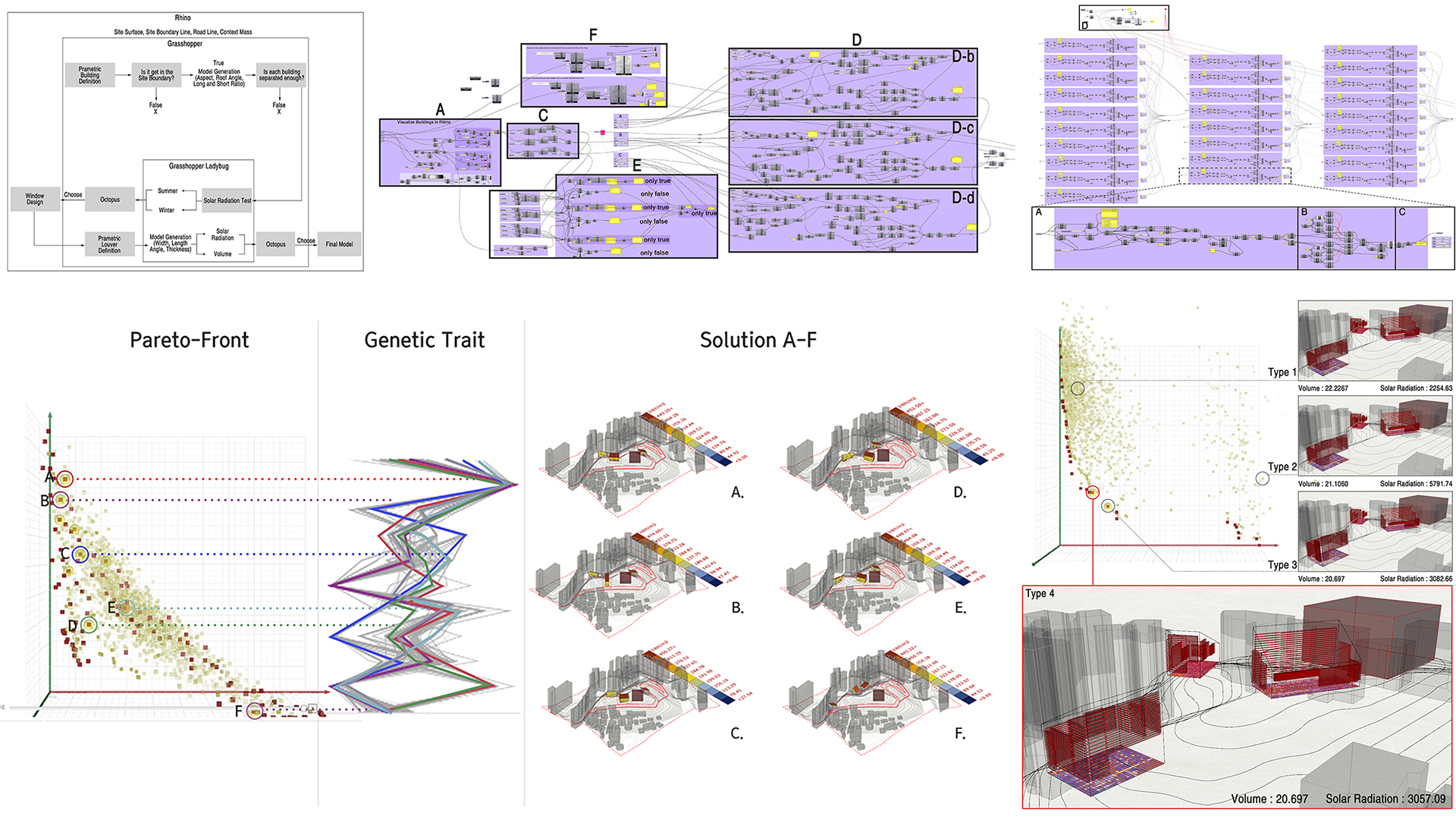>
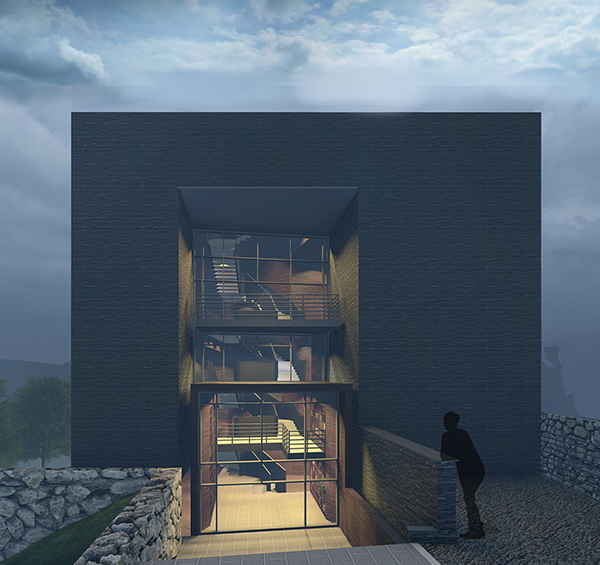
- Qurencia
PARAMETRIC, GENETIC ALGORITHM, OPTIMIZATION
-Multi Objective Optimization Based Community Complex Design- - Research
Year : 2020
Type : Community
Location : Seoul, Korea
Design Team :
Hyung Il Joo, Woo Hyoung Lee -
Recently, a number of complex projects are underway to expand green spaces and living SOC by utilizing idle lands in the cities. The purpose of these projects is to secure environmental performance that is the most essential requirement for a community complex located in the city center. Therefore, this study focuses on the importance of the environmentally optimal relationship between the exterior spaces, where the influence of the adjacent context is reflected, and the buildings and proposes a community complex design as a counterplan by optimization. To this end, an exemplary site with specific conditions is selected and a multi-objective genetic algorithm that simultaneously computes multiple conditions linked with environmental data is applied to derive an optimal site plan and an architectural design.
As an exemplary site, an idle land that remains as a physical, socio-economic boundary in the communities due to the demolition of old facilities, is selected, and an overall plan for a community complex is drafted based on the optimization
process. Rhino, Grasshopper, parametric design tools, Ladybug, an add-on for environmental analysis, and Octopus, an add-on for multi-objective optimization, are used. First, the site plan and architectural form optimized to achieve the optimal environmental conditions for solar radiation within the site are derived. Then, the optimal configuration for the external shading system is derived. The location of the buildings is determined based on the influence of the adjacent context and the relationship between each building; the architectural form is determined based on the orientation of the building linked to the solar radiation and the exterior mass. the exterior shading system is determined based on the optimal shielding rate by the size and spacing of each pin depending on the horizontal and vertical shading systems.
